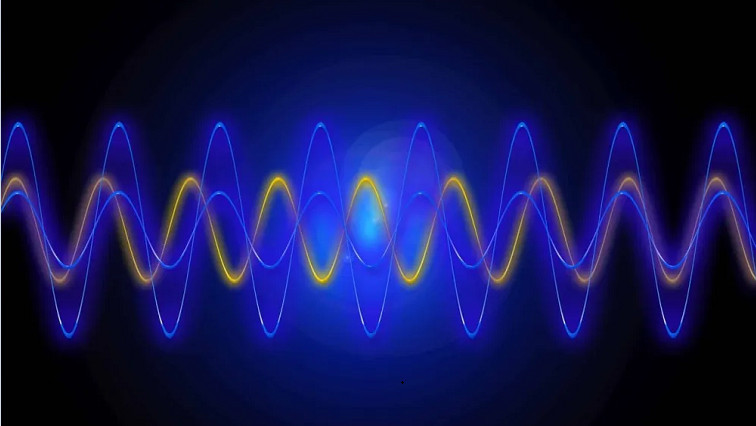Like electronics or photonics, magnonics is an engineering subfield that aims to advance information technologies when it comes to speed, device architecture, and energy consumption. A magnon corresponds to the specific amount of energy required to change the magnetization of a material via a collective excitation called a spin wave (visualized above).
Because they interact with magnetic fields, magnons can be used to encode and transport data without electron flows, which involve energy loss through heating (known as Joule heating) of the conductor used. As Dirk Grundler, head of the Lab of Nanoscale Magnetic Materials and Magnonics (LMGN) in the School of Engineering explains, energy losses are an increasingly serious barrier to electronics as data speeds and storage demands soar.
“With the advent of AI, the use of computing technology has increased so much that energy consumption threatens its development,” Grundler says. “A major issue is traditional computing architecture, which separates processors and memory. The signal conversions involved in moving data between different components slow down computation and waste energy.”
This inefficiency, known as the memory wall or Von Neumann bottleneck, has had researchers searching for new computing architectures that can better support the demands of big data. And now, Grundler believes his lab might have stumbled on such a “holy grail”.
While doing other experiments on a commercial wafer of the ferrimagnetic insulator yttrium iron garnet (YIG) with nanomagnetic strips on its surface, LMGN PhD student Korbinian Baumgaertl was inspired to develop precisely engineered YIG-nanomagnet devices. With the Center of MicroNanoTechnology‘s support, Baumgaertl was able to excite spin waves in the YIG at specific gigahertz frequencies using radiofrequency signals, and – crucially – to reverse the magnetization of the surface nanomagnets.
“The two possible orientations of these nanomagnets represent magnetic states 0 and 1, which allows digital information to be encoded and stored,” Grundler explains.
A route to in-memory computation
The scientists made their discovery using a conventional vector network analyzer, which sent a spin wave through the YIG-nanomagnet device. Nanomagnet reversal happened only when the spin wave hit a certain amplitude, and could then be used to write and read data.
“We can now show that the same waves we use for data processing can be used to switch the magnetic nanostructures so that we also have nonvolatile magnetic storage within the very same system,” Grundler explains, adding that “nonvolatile” refers to the stable storage of data over long time periods without additional energy consumption.
It’s this ability to process and store data in the same place that gives the technique its potential to change the current computing architecture paradigm by putting an end to the energy-inefficient separation of processors and memory storage, and achieving what is known as in-memory computation.
Optimization on the horizon
Baumgaertl and Grundler have published the groundbreaking results in the journal Nature Communications, and the LMGN team is already working on optimizing their approach.
“Now that we have shown that spin waves write data by switching the nanomagnets from states 0 to 1, we need to work on a process to switch them back again – this is known as toggle switching,” Grundler says.
He also notes that theoretically, the magnonics approach could process data in the terahertz range of the electromagnetic spectrum (for comparison, current computers function in the slower gigahertz range). However, they still need to demonstrate this experimentally.
“The promise of this technology for more sustainable computing is huge. With this publication, we are hoping to reinforce interest in wave-based computation, and attract more young researchers to the growing field of magnonics.”
Read the original article on École Polytechnique Fédérale de Lausanne (EPFL).







